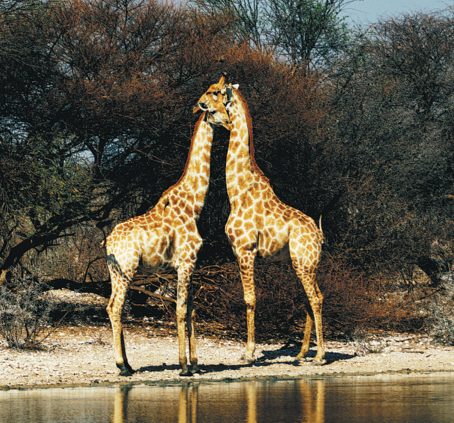Council members take aggressive stance in sustainable practices
Diamond mining, like all mining, has an effect on the environment. In the search for the precious stones, land and water resources can be affected including discharges of carbon dioxide.
The Natural Diamond Council, established by the world's leading diamond mining companies in 2016, pledged to implement environmentally friendly production and realize sustainable development of the industry in the 35 mining sites they operate.
The council has joined the efforts of its members and local governments in tackling the damage that may be caused to the environment and providing long-term social benefits to the people and society in diamond-mining areas.
Centering on the three fields of environment, community and employees, they have generated $16 billion in social, economic and environmental benefits.
NDC member companies have implemented a series of biodiversity maintenance plans and protected more than 260,000 hectares of land in Australia, Botswana, Canada, South Africa, Tanzania and Russia, which is three times larger than their actual mining areas.
One of the main effects of the modern mining industry on the environment is the emission of greenhouse gases.
Data show that NDC member companies generate 160 kilograms of carbon dioxide per carat of polished diamond.
NDC members are willing to shoulder the responsibility to work together with the local governments and the communities in environmental recovery.
Once they start to operate in mining areas, NDC members think it is necessary to monitor the environmental effect to ensure their activities strictly comply with environmental protection obligations.
About 99 percent of the waste generated by NDC members are stones, which will be recycled and reclaimed for the land in the process of mine closure and restoration.
When they apply to operate new mines, NDC members will reach an agreement with the local governments to ensure that the interests of all parties are taken into account.
When some mines are set to close, NDC members would ensure the excavation areas are a safe habitat for wild animals and the ecology between its waters and land is maintained.
Most of the NDC member companies advocate wildlife protection and wilderness ecology, which is embodied in their monitoring and protection plans and the cooperation projects they have forged with local governments, communities and conservation organizations.
Through these efforts, NDC members help protect endangered wildlife, including thousands of deer, grizzly bears and elephants.
A major facet of their conservation efforts includes the Moving Giants Program, a partnership between De Beers Group, one of the world's leading diamond miners, and Peace Parks Foundation. Together, they have relocated more than 100 elephants from the overpopulated Venetia Limpopo Nature Reserve in South Africa to the Zinave National Park in Mozambique.
As one of the longest elephant transfers ever attempted, the project ensured both ecosystems would continue to flourish.
Mine closure plan is agreed upon in collaboration with governments and neighboring communities before mining begins and it takes several years to execute following the end of mining activities. This ensures the land is safe for wildlife and people to use.
Wildlife can be spotted easily in the mining areas. The Diamond Route project — a network of eight protected areas established by De Beers Group is a successful case in land protection.
As a part of the Diamond Route, the Orapa Game Park is a network of eight conservation sites covering around 200,000 hectares throughout southern Africa. Orapa, which means "the resting place of lions," is a 48,964-hectare wildlife reserve for many animals including rhinos, giraffes, zebras, springboks and elands.
The Orapa Game Park is an example of the extensive conservation activities that are supported by the natural diamond mining industry. Diamond mining companies invest significantly in conservation efforts, protecting more than 2,590 square kilometers of natural land globally, three times more than what is used for mining.
The De Beers Diamond Route covers more than 1,870 sq km of key habitats in South Africa, Botswana and Namibia. It has created learning and research opportunities for students, scientists and scholars on the vast plain.
This October, the NDC's newly appointed global ambassador actress Lily James visited Botswana to experience firsthand the natural diamond industry.
Botswana has adopted a low-volume tourism strategy to ensure protection of wildlife and nature. This translates into an exceptional experience for tourists where luxurious lodges are operated in a sustainable manner amid flourishing and diverse fauna and flora.
The Selinda Reserve in Botswana is one of the most untouched wilderness areas on Earth.
Located on the banks of the Selinda Spillway and at the entrance of the Linyanti River, it's a private 130,000-hectare reserve with thousands of elephants, African wild dogs and the famous Selinda lion pride.
"I've been awestruck by the natural beauty and the vibrant communities I've seen in Botswana," James said. "To know so much of this land — more than 2,590 sq km globally is protected by the natural diamond industry makes me incredibly proud to be the NDC's global ambassador."
NDC members are also aware of the importance of protecting the water quality and supply in the mining area.
Data in 2016 showed NDC member companies used 73 cubic meters of water for each carat of polished diamond.
Most mines recycle the water used in processing plants, of which 83 percent was recycled on average. The recovery plan became a key factor in reducing water consumption.












